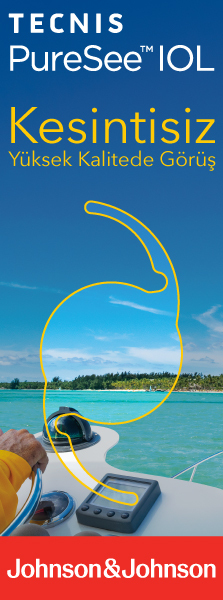Materials and Methods: The study included 58 eyes of 39 diabetic patients with diffuse diabetic macular edema that failed to respond previous laser photocoagulation. 4 mg/ 0.1 ml intravitreal triamcinolone acetonide injection was administered. Best-corrected logMAR visual acuity, intraocular pressure were measured and central foveal thickness was obtained by optical coherence tomography before and at each visit after intravitreal injection. Lenticular status and complications were monitored. Differences among measurements were evaluated by FriedmanTwo-Way Analysis of Variance by Ranks. Spearman’s correlation was used for the analysis of relation between reduction of central macular thickness and visual acuity.
Results: The mean follow-up period was 14,0±4,8 months (12- 26 months). The mean foveal thickness at initial examination was 709.90±295.14 μm. It was 282.81±138.03 μm, 323.23±199.62 μm, 443.19±253.16 μm, and 396.05±275.96 μm at 1, 3, 6 and 12 months after intravitreal triamcinolone injection respectively. The mean central foveal thickness which was obtained at each visit postoperatively was significantly different than the baseline measurement (p<0.001). Mean bestcorrected logMAR visual acuity improved significantly from baseline at the 1st, and 3rd months (p<0.05), but there was no significant change at the 6th, and 9th months (p>0.05). During the follow-up, 22 (37.9%) eyes received reinjections of intravitreal triamcinolone. The mean period between first and second injection was 7.27±2.80 months. Fourteen (24.1%) eyes developed intraocular pressure values higher than 21 mmHg after a mean period of 2.6 months and two (3.4%) of them required filtration surgery. Six (10.3%) eyes developed cataract and four (6.9%) of them required cataract surgery.
Conclusion: In diffuse diabetic macular edema, intravitreal triamcinolone injection cause significant anatomical improvement demonstrated by OCT, and functional improvement within first 3 months. The most common complications are intraocular pressure elevation and cataract development in the long-term. In order to obtain permanent therapeutic effect, reinjections are necessary.
Keywords : Intravitreal triamsinolon asetonide, diabetic macular edema, optic coherence tomography




